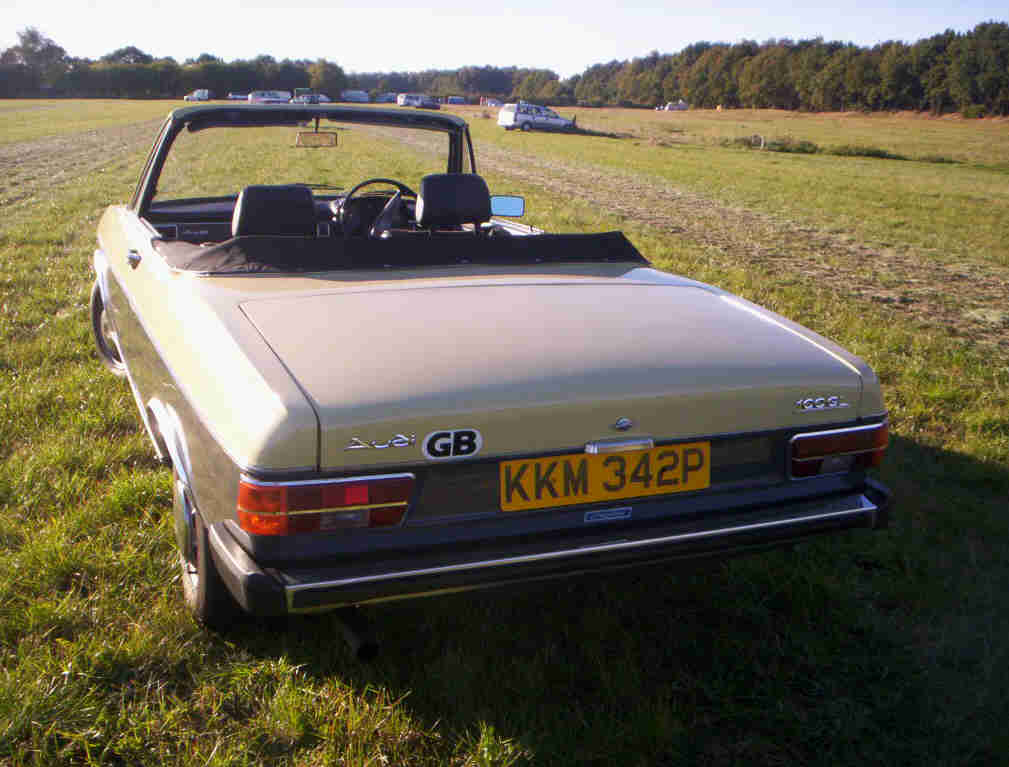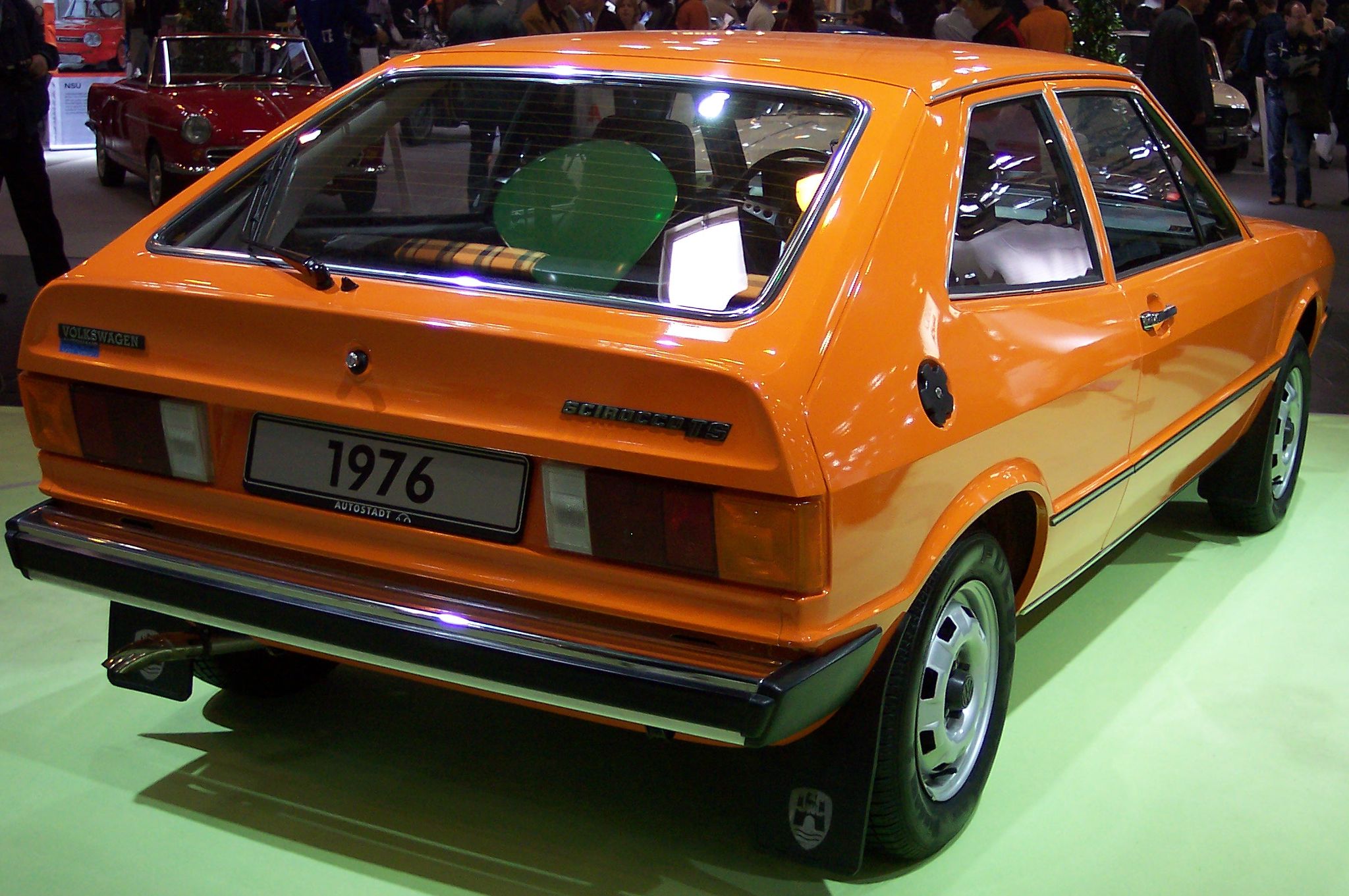|
Crayford Engineering
Crayford Engineering (more commonly known simply as Crayford) was an automobile coachbuilder based in Westerham, Kent, England and formed in 1962 by Jeffrey Smith (engineer and designer) and David McMullan, (sales). In the 1970s, a subdivision within the company, called Crayford Auto Developments, Ltd., was established for automobiles. The company specialized in converting European coupés and saloons into convertibles and estates. Notable products included the convertible Mini, BMC 1100/1300 convertible, convertible Corsair, Cabriolet Corsair, Cabriolet Capri, the rare Triumph TR7 Tracer Estate, and a Princess hatchback conversion, a commonly accepted principle for a car that appeared to be, but was not, a hatchback to begin with. Other lesser-known conversions from Crayford included the Tempest, a convertible Volkswagen Scirocco, a Ford Cortina Mk V Convertible, and a Mercedes S-Class Estate. In 1966 the company converted, for the Heinz food company, 57 Wolseley Hornet M ... [...More Info...] [...Related Items...] OR: [Wikipedia] [Google] [Baidu] |
Ford Capri
The Ford Capri is a fastback coupé built by Ford of Europe, designed by Philip T. Clark, who was also involved in the design of the Ford Mustang. It used the mechanical components from the Mk2 Ford Cortina and was intended as the European equivalent of the Ford Mustang. The Capri went on to be highly successful for Ford, selling nearly 1.9 million units in its lifetime. A wide variety of engines were used in the car throughout its production lifespan, which included the ''Essex'' and ''Cologne'' V6 at the top of the range, while the ''Kent'' straight-four and ''Taunus'' V4 engines were used in lower-specification models. Although the Capri was not officially replaced, the second-generation Probe was effectively its replacement after the later car's introduction to the European market in 1994. While Ford marketed the car as "Ford Capri – The Car You Always Promised Yourself", the British magazine '' Car'' described the Capri as a "Cortina in drag". History Fo ... [...More Info...] [...Related Items...] OR: [Wikipedia] [Google] [Baidu] |
Ford Granada (Europe)
The European Ford Granada is a large executive car manufactured by Ford Europe from 1972 until 1994. The first-generation model was produced from 1972 to 1976 at Ford’s German factory in Cologne and at its British factory in Dagenham. In 1976, production switched entirely to Germany. The original version was replaced in 1977 by a second-generation model which was produced until 1985. From 1985 to 1994, the Granada name was used, in the United Kingdom and Ireland only, for a third-generation model which was sold in other European markets as the Ford Scorpio and in North America as the Merkur Scorpio. __TOC__ Mark I (1972–1977) Launched in March 1972, the Granada succeeded the British Ford Zephyr, and the German P7-series as Ford's European executive car offering, and completed the integration of Ford's British and German model ranges. At first, lower models in the range were called the Ford Consul. This may have been because of a lawsuit by Granada Group, a ... [...More Info...] [...Related Items...] OR: [Wikipedia] [Google] [Baidu] |
Mercedes-Benz W116
The Mercedes-Benz W116 is a series of flagship luxury sedans produced from September 1972 until 1980. The W116 automobiles were the first Mercedes-Benz models to be officially called S-Class, although earlier sedan models had already unofficially been designated with the letter 'S' – for ''Sonderklasse'' or "special class." The ''W116'' was selected European Car of the Year in 1974. History The 'new' S-class generation development began in 1966, which was only a year after the launch of the W108/09. This was the first Mercedes saloon to feature the brand new corporate styling theme which was to be continued until 1993 when the 190 was discontinued. The design, finalized in December 1969 was a dramatic leap forward, with more masculine lines that combined to create an elegant and sporty character. The basic design concept carried through the themes originally introduced on the R107 SL-Class roadster, especially the front and rear lights. As for the SL, the W116 received the ri ... [...More Info...] [...Related Items...] OR: [Wikipedia] [Google] [Baidu] |
Mercedes S-Class
The Mercedes-Benz S-Class, formerly known as ''Sonderklasse'' (German for "special class", abbreviated as "S-Klasse"), is a series of full-sized luxury sedans, limousines and armored sedans produced by the German automaker Mercedes-Benz, a division of the German company Mercedes-Benz. The S-Class is the designation for top-of-the-line Mercedes-Benz models and was officially introduced in 1972 with the W116, and has remained in use ever since. The S-Class is the flagship vehicle for Mercedes-Benz. The S-Class has debuted many of the company's latest innovations, including drivetrain technologies, interior features, and safety systems (such as the first seatbelt pretensioners). The S-Class has ranked as the world's best-selling luxury sedan. In automotive terms, ''Sonderklasse'' refers to "a specially outfitted car." Although used colloquially for decades, following its official application in 1972, six generations of officially named ''S-Klasse'' sedans have been produced. I ... [...More Info...] [...Related Items...] OR: [Wikipedia] [Google] [Baidu] |
Ford Cortina
The Ford Cortina is a medium-sized family car that was built initially by Ford of Britain, and then Ford of Europe in various guises from 1962 to 1982, and was the United Kingdom's best-selling car of the 1970s. The Cortina was produced in five generations (Mark I through to Mark V, although officially the last one was only the Cortina 80 facelift of the Mk IV) from 1962 until 1982. From 1970 onward, it was almost identical to the German-market Ford Taunus (being built on the same platform), which was originally a different car model. This was part of Ford's attempt to unify its European operations. By 1976, when the revised Taunus was launched, the Cortina was identical. The new Taunus/Cortina used the doors and some panels from the 1970 Taunus. It was replaced in 1982 by the Ford Sierra. In Asia and Australasia, it was replaced by the Mazda 626-based Ford Telstar, though Ford New Zealand did import British-made complete knock-down kits of the Sierra estate for local assemb ... [...More Info...] [...Related Items...] OR: [Wikipedia] [Google] [Baidu] |
Volkswagen Scirocco
The Volkswagen Scirocco is a three-door, front-engine, front-wheel-drive, sport compact hatchback manufactured and marketed by Volkswagen in two generations from 1974 to 1992 and a third generation from 2008 until 2017. Production ended without a successor. The Scirocco derives its name from the Mediterranean wind. First generation (1974) Volkswagen began work on the car during the early 1970s as the replacement for the aging Karmann Ghia coupe, and designated it the ''Typ 53'' internally. Although the platform of the Golf was used to underpin the new Scirocco, almost every part of the car was re-engineered in favour of a new styling (penned by Giorgetto Giugiaro) which was sleeker and sportier than that of the Golf. The Scirocco debuted at the 1973 Geneva Motor Show. Launched six months before the Golf, in order to resolve any teething troubles before production of the high volume hatchback started, the Scirocco went on sale in Europe in 1974 and in North America in 1975. ... [...More Info...] [...Related Items...] OR: [Wikipedia] [Google] [Baidu] |
Princess (car)
The Princess is a large family car produced in the United Kingdom by the Austin-Morris division of British Leyland from 1975 until 1981 (1982 in New Zealand). The car inherited a front-wheel drive / transverse engine configuration from its predecessor, the Austin/Morris 1800 range. This was still unusual in Europe for family cars of this type and gave the Princess a cabin space advantage when compared with similarly sized cars from competing manufacturers. The car, which had the design code ADO71, was originally marketed as the Austin / Morris / Wolseley 18–22 series. Ahead of the October 1975 London Motor Show the range was rebranded "Princess". This was effectively a new marque created by British Leyland, although the "Princess" name had previously been used for the Austin Princess limousine from 1947 to 1956, and the Vanden Plas Princess. The Princess is often referred to, incorrectly, as the Austin Princess. Although this name was not used in the UK market, it was ... [...More Info...] [...Related Items...] OR: [Wikipedia] [Google] [Baidu] |
Triumph TR7
The Triumph TR7 is a sports car manufactured in the United Kingdom from September 1974 to October 1981 by British Leyland Motor Corporation (BLMC), which changed its name to British Leyland (BL) in 1975. The car was launched in the United States in January 1975, with its UK home market debut in May 1976. The UK launch was delayed at least twice because of high demand for the vehicle in the US, with final sales of new TR7s continuing into 1982. It was initially produced at the Speke, Liverpool, factory, moving to Canley, Coventry, in 1978 and then finally to the Rover Solihull plant in 1980. Design and features The car, characterised by its "wedge" shape and by a swage line sweeping down from the rear wing to just behind the front wheel, was commonly advertised as "the shape of things to come". The design was penned by Harris Mann who also designed the wedge-shaped Princess. The car has an overall length of 160 inches (406 cm), width of 66 inches (168 ... [...More Info...] [...Related Items...] OR: [Wikipedia] [Google] [Baidu] |
Ford Corsair
The name Ford Corsair was used both for a car produced by Ford of Britain between 1963 and 1970, and for an unrelated Nissan-based automobile marketed by Ford Australia between 1989 and 1992. Ford Consul Corsair (1963–1965), Ford Corsair V4 (1965–1970) – Britain The Ford Consul Corsair (later known simply as the Ford Corsair), manufactured by Ford UK, is a midsized car that was introduced at the London Motor Show in October 1963 and available as either a saloon or estate from 1964 until 1970. Also, a convertible version was built by Crayford, which is now very rare and highly sought-after as a classic. Two-door Corsair saloons are also rare, being built only to order in the UK, although the volume of two-door production continued for some export markets. Only one example of the fleet model, the Consul Corsair Standard, is known to exist. Unlike the Ford Cortina which had five versions (Mks), or the Ford Capri which had face-lifts, the entire production run of the Ford ... [...More Info...] [...Related Items...] OR: [Wikipedia] [Google] [Baidu] |
Automobile
A car or automobile is a motor vehicle with wheels. Most definitions of ''cars'' say that they run primarily on roads, seat one to eight people, have four wheels, and mainly transport people instead of goods. The year 1886 is regarded as the birth year of the car, when German inventor Carl Benz patented his Benz Patent-Motorwagen. Cars became widely available during the 20th century. One of the first cars affordable by the masses was the 1908 Model T, an American car manufactured by the Ford Motor Company. Cars were rapidly adopted in the US, where they replaced animal-drawn carriages and carts. In Europe and other parts of the world, demand for automobiles did not increase until after World War II. The car is considered an essential part of the developed economy. Cars have controls for driving, parking, passenger comfort, and a variety of lights. Over the decades, additional features and controls have been added to vehicles, making them progressively more comple ... [...More Info...] [...Related Items...] OR: [Wikipedia] [Google] [Baidu] |









